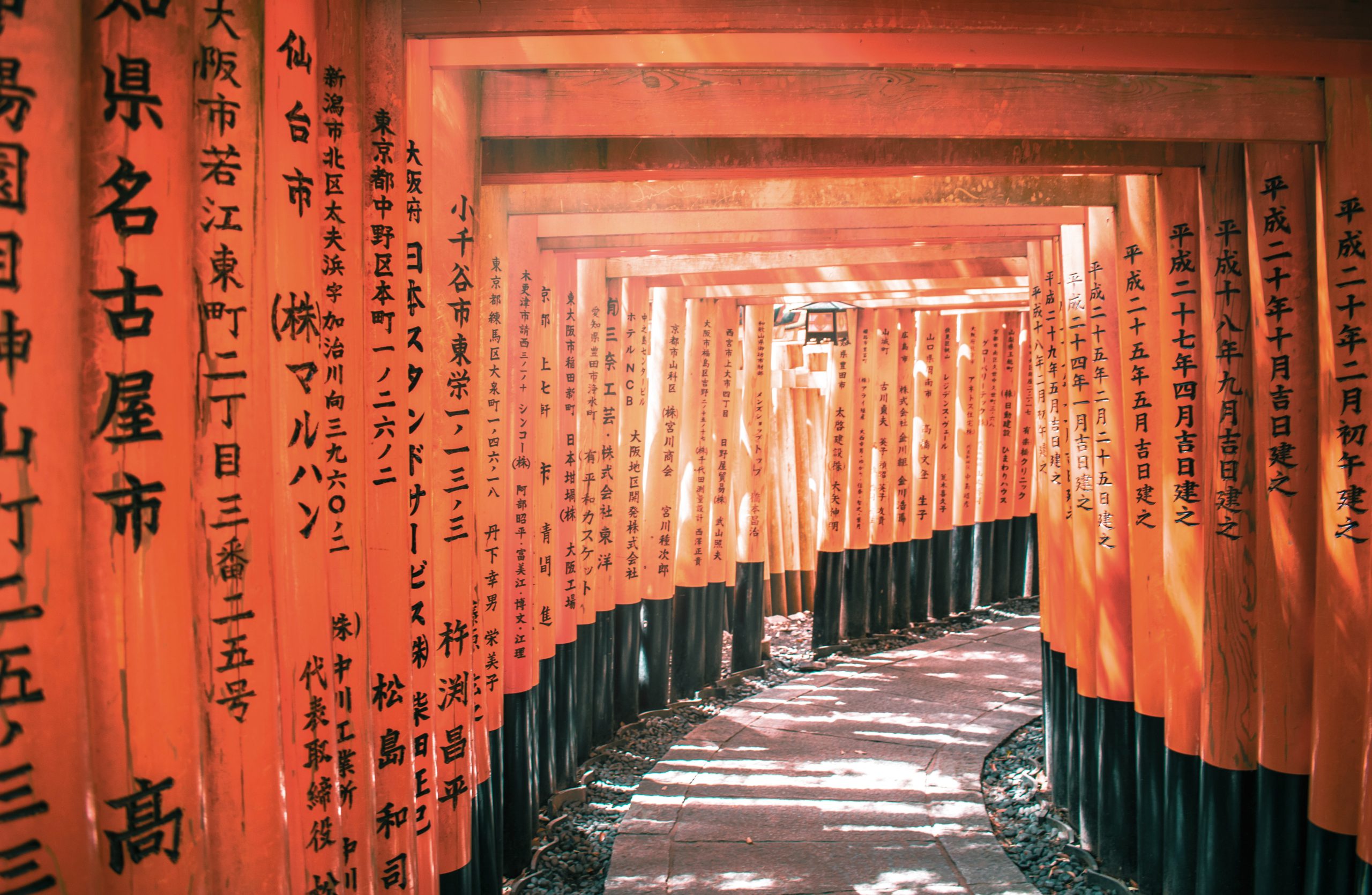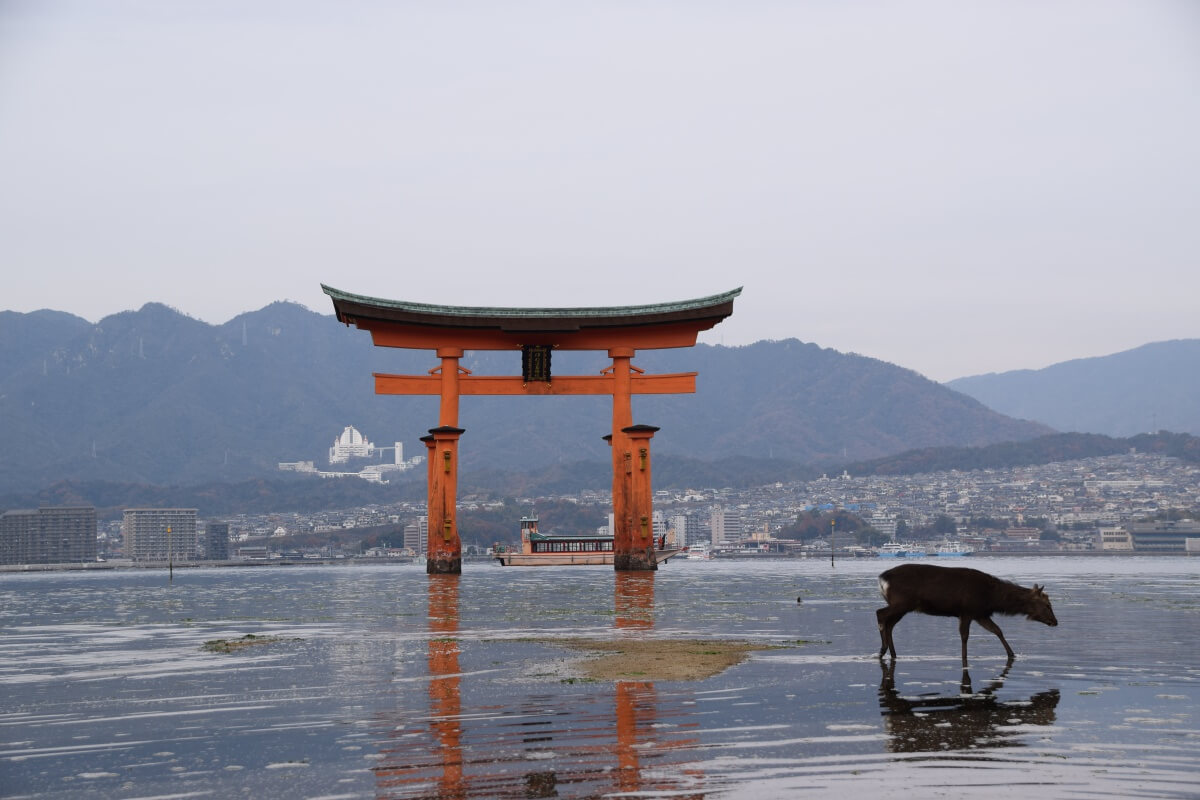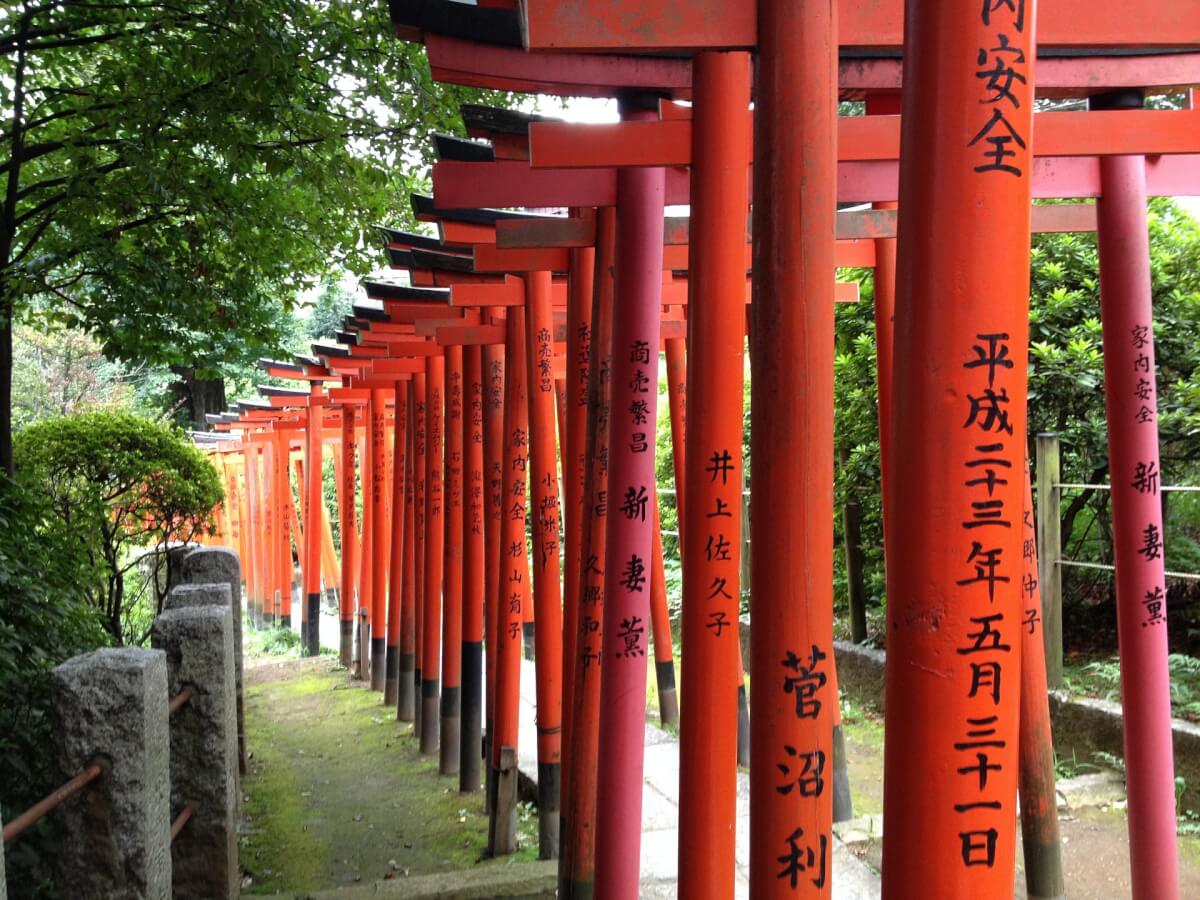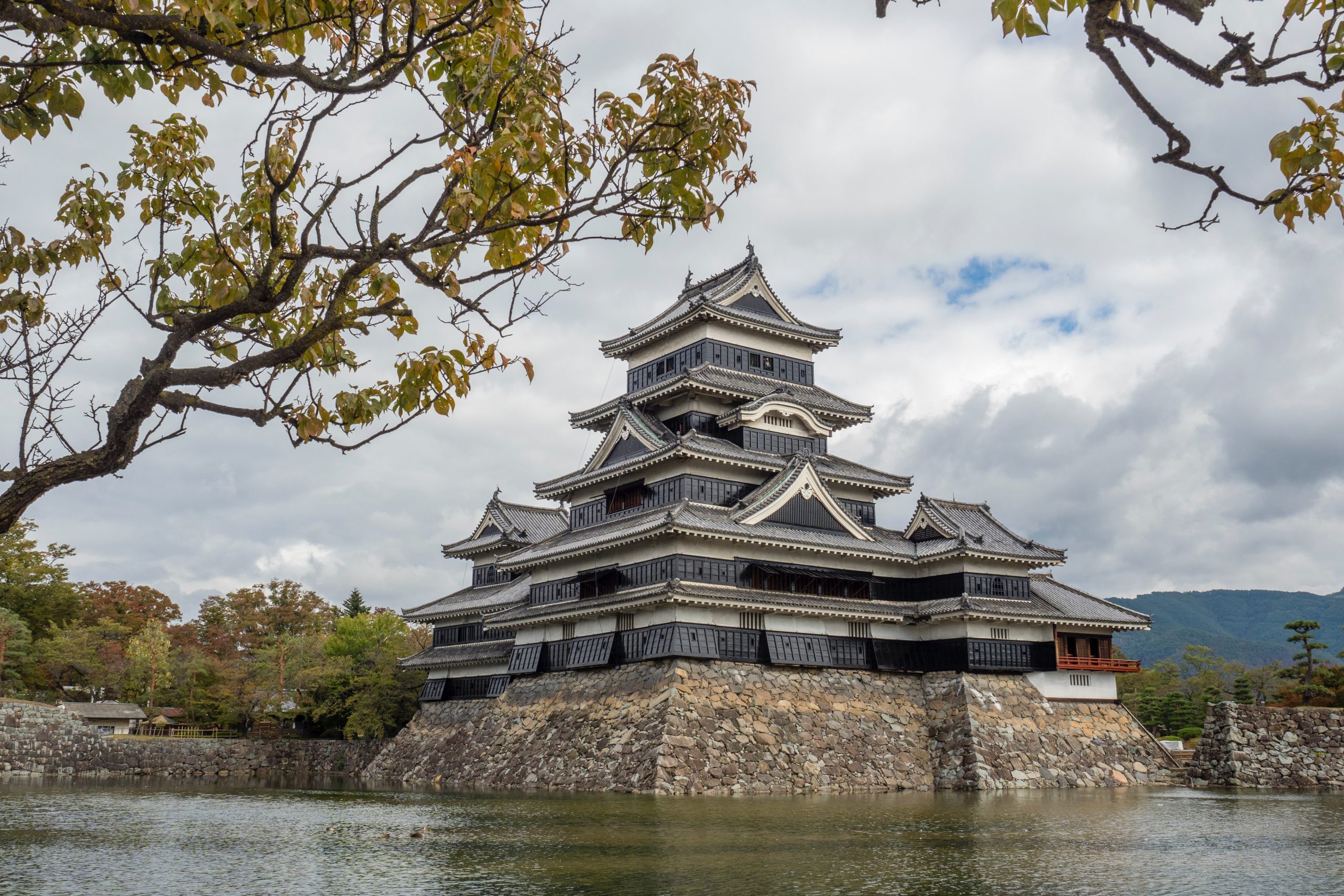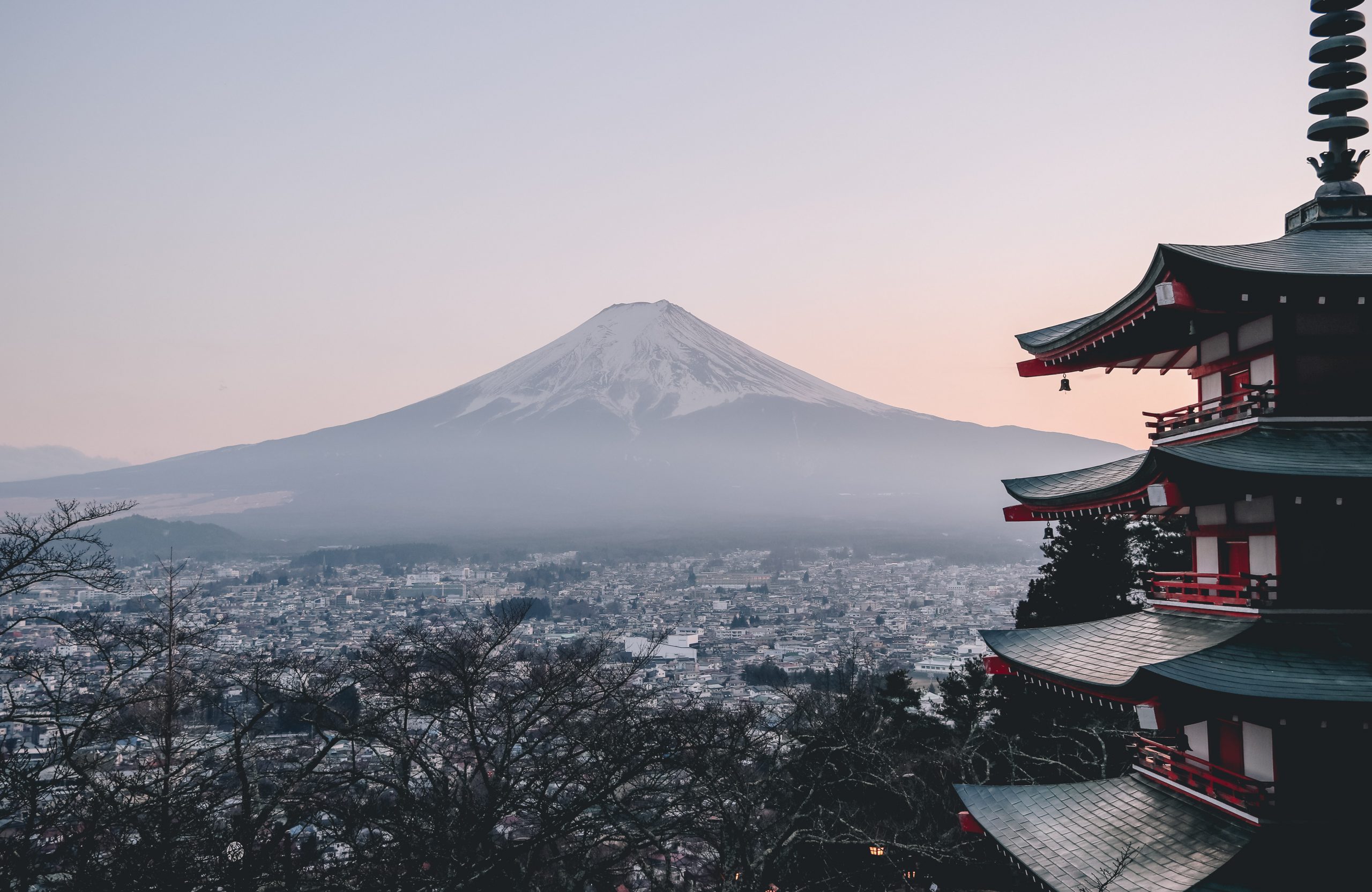What is torii gate?
An image that often comes to mind when thinking about Japan is one with a large, red gate, like the floating torii gate in Miyajima or the thousands of red torii gates at the Fushimi Inari shrine in Kyoto. A torii gate is a traditional Japanese gate and is most often seen at Shinto shrines, which are thought to be the homes of the Shinto gods and the torii gates mark the gateway between the human world and the sacred world. However, in some cases you can also find a torii gate at the entrance of a Buddhist temple too (see the reason in the article: Shinbutsu-Shugo). Some torii gates in Japan are impressive in size or situated at unique locations, and they have become an icon of the area. In this article, we introduce the most iconic torii gates in Japan you need to see.
1. Itsukushima Shrine, Miyajima
Itsukushima Shrine is located on the small island called Itsukushima just off the coast of the Hiroshima Prefecture in the Seto Inland Sea. The island is more popularly known as Miyajima, which literally means ‘island of worship’. Since ancient times the island itself has been worshipped as a god.
Dedicated to gods that protect people from sea disasters and wars, the shrine was thought to have been built in 593. In 1168, Taira no Kiyomori, the most powerful man in Japan during the end of the Heian Period (794-1185), selected the island as the site of his clan’s family shrine and rebuilt Itsukushima Shrine as magnificent vermillion-lacquered buildings.
Itsukushima Shrine is a World Heritage Site with a gigantic vermilion torii gate that seemingly floats on the sea during high tide. The gate is the most famous feature of the shrine, and attracts thousands of tourists from around the world yearly.
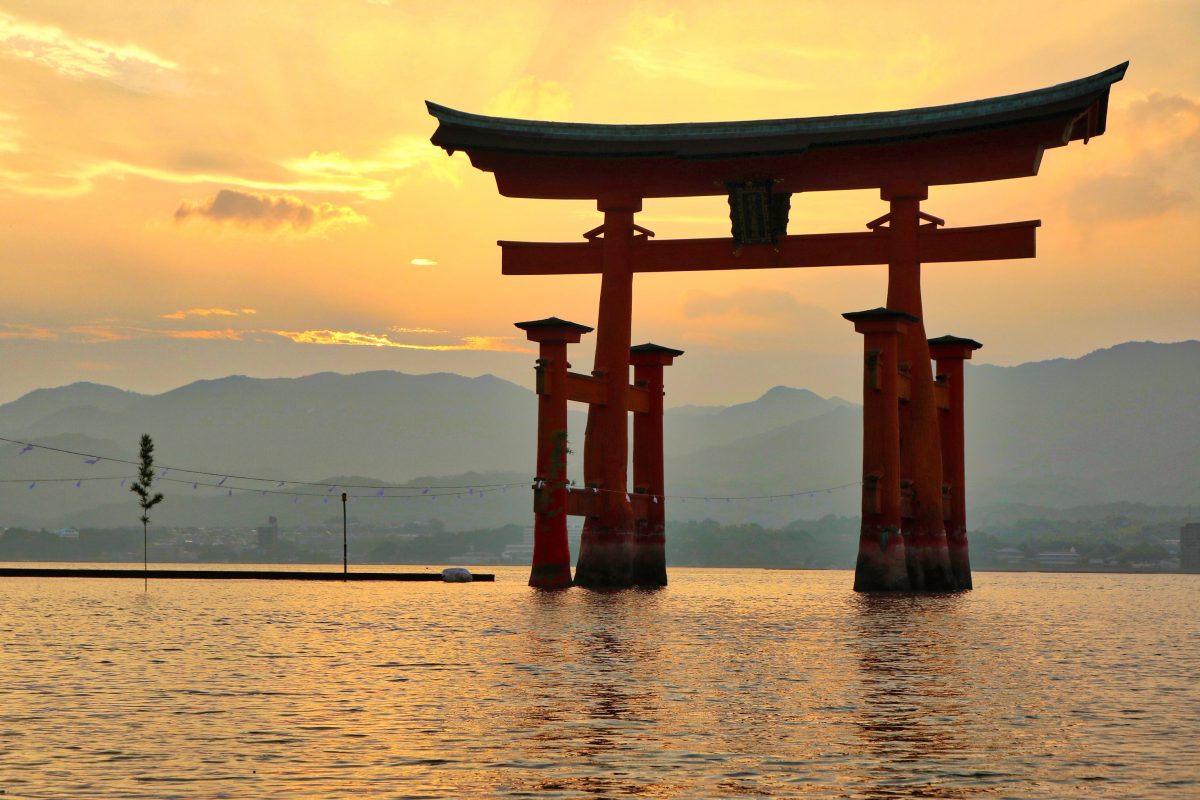
How to get to Itsukushima Shrine
The shrine is located a 10 minute walk from the Miyajima ferry pier. To get to the ferry port from Hiroshima Station, take the JR Sanyo Line to Miyajimaguchi Station (about 25minutes). Or, take tram line number 2 from central Hiroshima bound for Miyajimaguchi.
2. Shitenno-ji Temple, Osaka
Founded in 593 by the prince Shotoku Taishi who played a leading role in introducing Buddhism to Japan, Shitennoji Temple in Osaka, is Japan’s oldest official temple. Though this temple complex has a long history, most of the buildings have been destroyed by fire and rebuilt several times. Some of the current buildings actually date from the 1960s and 1970s.
Although it is a temple and not a shrine, Shitenno-ji Temple features a giant stone torii gate at the main entrance which is the oldest of its kind in the country dating from 1294. This is an example of the syncretic fusion of Shintoism and Buddhism. Before Shinto and Buddhism were separated by a jurisdiction of the Meiji government, this type of fusion was quite common.
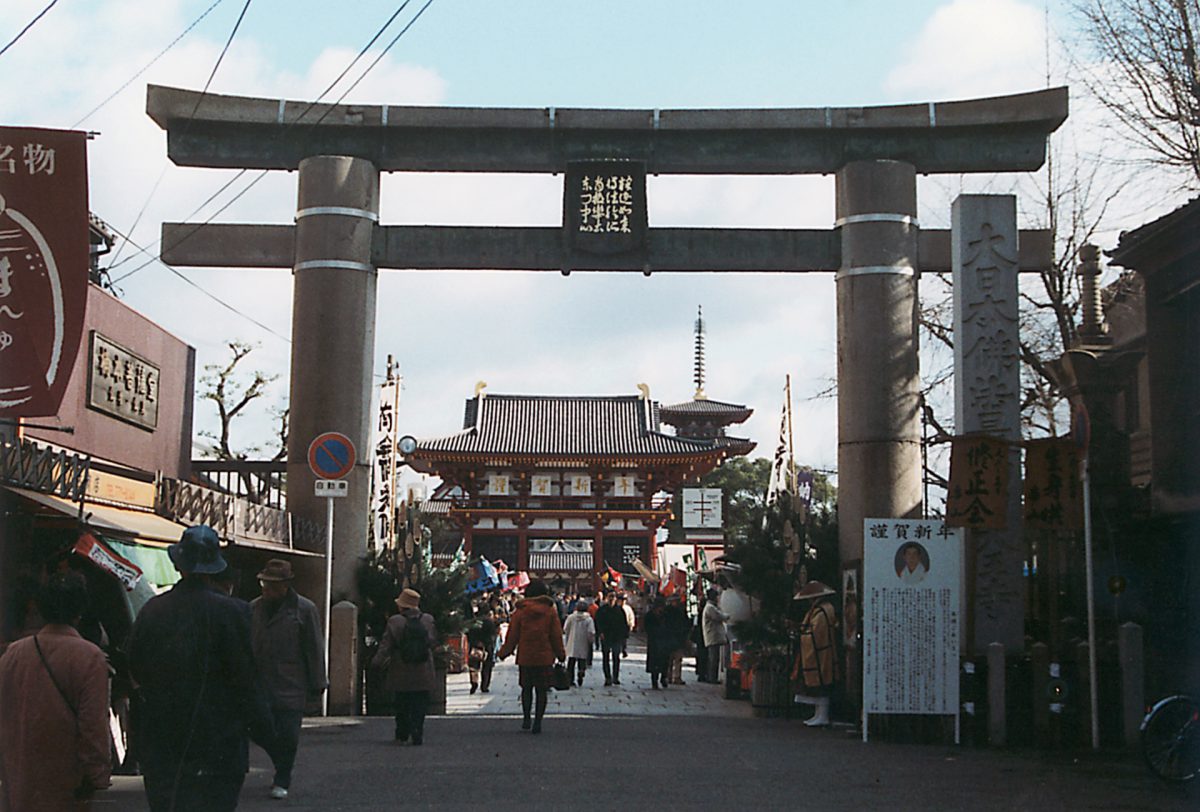
How to access Shitenno-ji Temple
The temple is located a short walk from Shitennoji-mae-Yuhigaoka Station on the Tanimachi Subway Line or a 10 minute walk from JR Tennoji Station on the JR Loop Line.
3. Fushimi Inari Shrine, Kyoto
Fushimi Inari Shrine, located in southern Kyoto, is possibly one of the most famous places in Japan for the several thousands of shrines dedicated to Inari, the Shinto god of rice harvest, commerce and business. The original structures of the shrine were constructed in 711 to enshrine the deity “who feeds, clothes and houses us and protests us so that all of us may live with abundance and pleasure”. The current main shrine hall was constructed in 1499, and the current main gate at the bottom of the hill was built in 1589.
The most distinctive feature of Fushimi Inari Shrine is the winding path of thousands of bright vermilion torii gates behind the shrine buildings. The paths lead you near the top of Mount Inari-san, passing several great spots along the way. Fushimi Inari Shrine and its many red torii gates is one of the most visited spots in Japan by tourists from around the world.
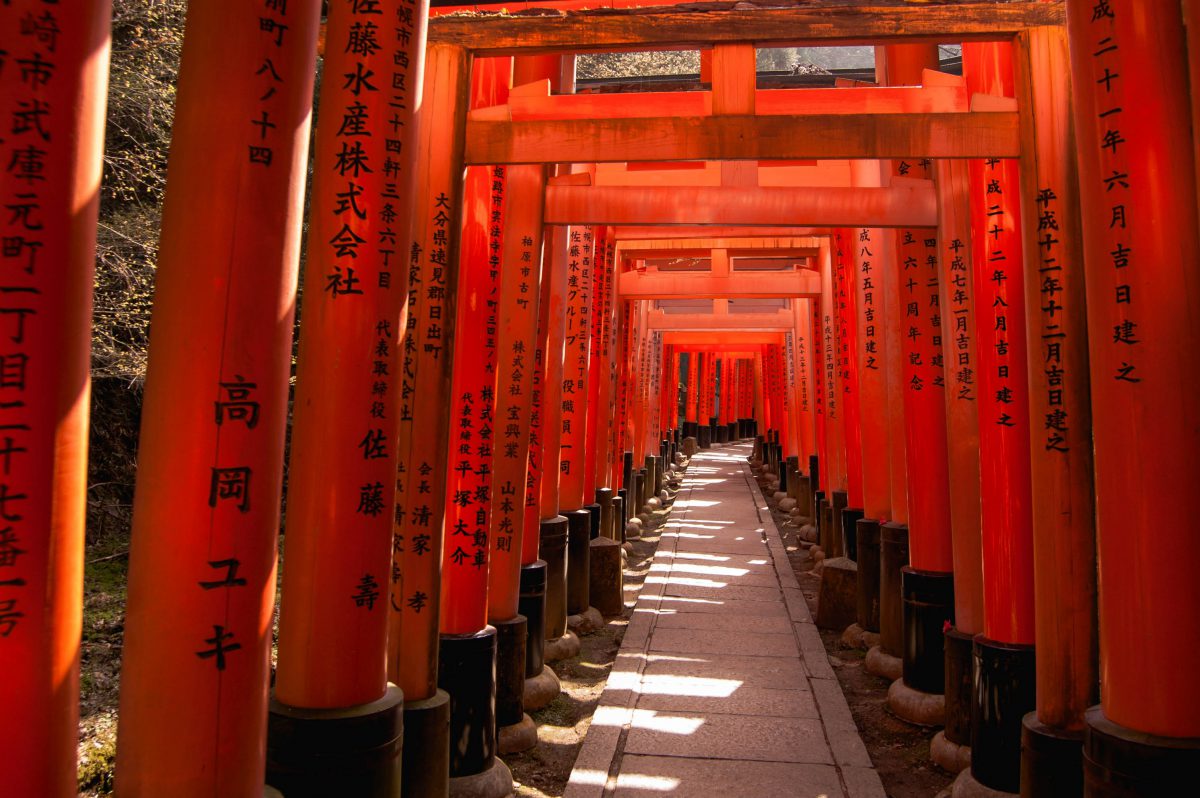
How to get to Fushimi Inari Shrine
Fushimi Inari Shrine is located just outside JR Inari Station, the second station from Kyoto Station on the JR Nara Line. The shrine can also be reached in a short walk from Fushimi Inari Station.
4. Meiji Shrine, Tokyo
Surrounded by a lush green forest right in the heart of Tokyo, this Shinto shrine is dedicated to Emperor Meiji (1852-1912) and Empress Shoken. Meiji Jingu is the most famous Shinto shrine in Tokyo, and one of the most visited tourist attractions in the city.
After you have passed the grand wooden torii gate marking the beginning of the shrine ground, you will find it hard to believe you are in the middle of one of the busiest cities in the world. There are over 100,000 trees which were donated from all over Japan.
In the middle of the forest, you will find the main complex of shrine buildings. There is also the Meiji Jingu Museum, which was newly opened in 2019 and displays treasures from the shrine’s collection, including interesting personal belongings of the emperor and empress.
A large area of the southern section of the shrine grounds is taken up by the Inner Garden, which requires an entrance fee to enter. The garden becomes particularly popular during the middle of June when the irises are in bloom.
In the first days of the New Year, more than three million people pay a visit here for the year’s first prayers (hatsumode), more than any other shrine or temple in the country. During the rest of the year, traditional Shinto weddings can often be seen taking place here.
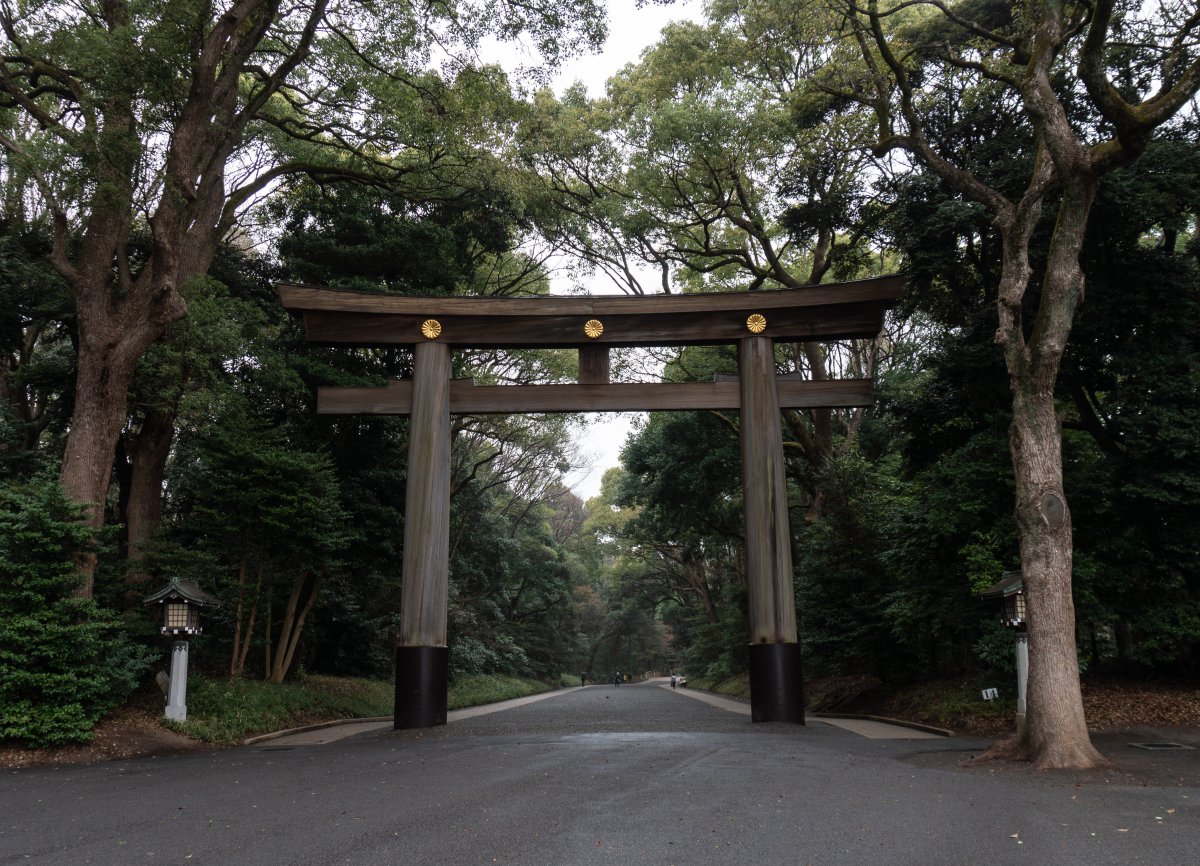
How to get to Meiji Shrine
Meiji Shrine is located just a few steps from Harajuku Station or Meiji-jingu-mae Station.
5. Futami Okitama Shrine, Mie
Futami Okitama Shrine is a small seaside shrine located in Ise in Mie Prefecture. This shrine is known for Meoto-Iwa or the Wedded Rocks, two rocks that are connected by rope and together form a symbol of marriage for the Shinto religion. The two rocks also represent the union of Izanagi and Izanami, the two Shinto gods responsible for the creation of the Islands of Japan. Even though the rocks aren’t shaped like a torii gate, they represent the gateway from the earthly world to the sacred one. On top of the tallest rock you’ll see a tiny torii gate, making this even more special.
Futami Okitama Shrine is mainly dedicated to Miketsu, the Shinto goddess of food, but the Meoto-Iwa being part of the shrine, is visited by a lot of Japanese couples who go there and pray for a good marriage. Meoto-Iwa is best seen at high tide because although the low tide allows you to see them from a closer point.
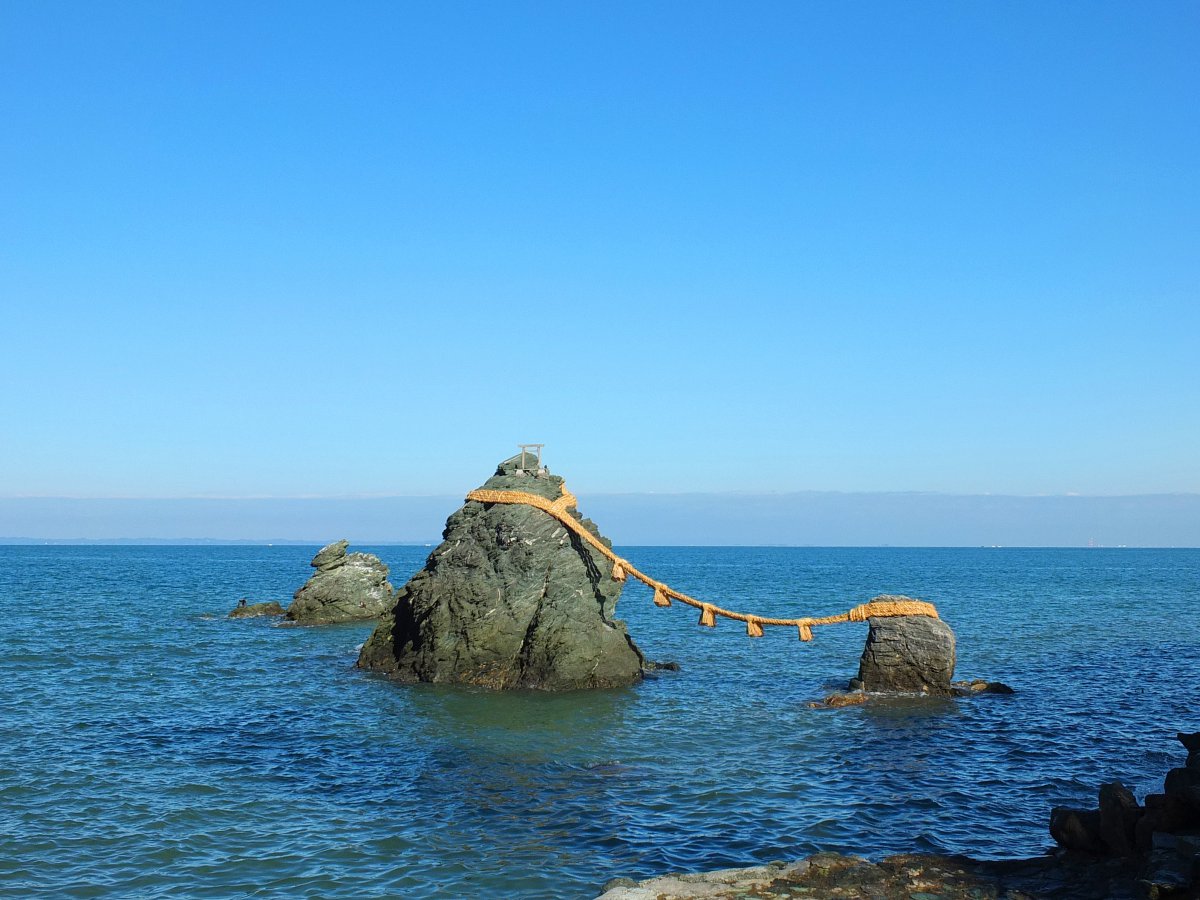
How to get to Meoto-Iwa
The rocks are a 15 minute walk from JR Futaminoura Station, which can be reached by JR trains in less than 10 minutes from Iseshi Station.
The rocks can also be accessed by the CAN buses, which reach all the main points of Ise.
6. Kinpusenji Temple, Nara
Kinpusenji Temple, located on Mount Yoshino in the Nara Prefecture, is one of the most important temples of Shugendo, a religion based on mountain worship that combines both Buddhism and Shinto. The temple was designated a World Heritage site in 2004.
One of the highlights of this temple is the Zaodo Hall, which was built around 1592. It is a gigantic wooden structure, 34 meters tall and 36 meters wide. Highly detailed figures are sculpted on both the exterior and interior of the building, adding a graceful touch to its architecture. The Zaodo Hall and the two-storied Niomon Gate have been designated as a national treasure. The two guardian statues on each side of the gate, standing five meters tall, are the second largest in Japan. A large torii gate, which can usually be seen at Japanese shrines, is located at the entrance of the approach to the temple. Making this temple a rather special place.
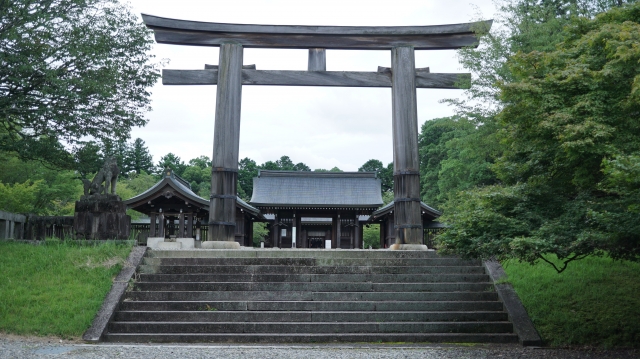
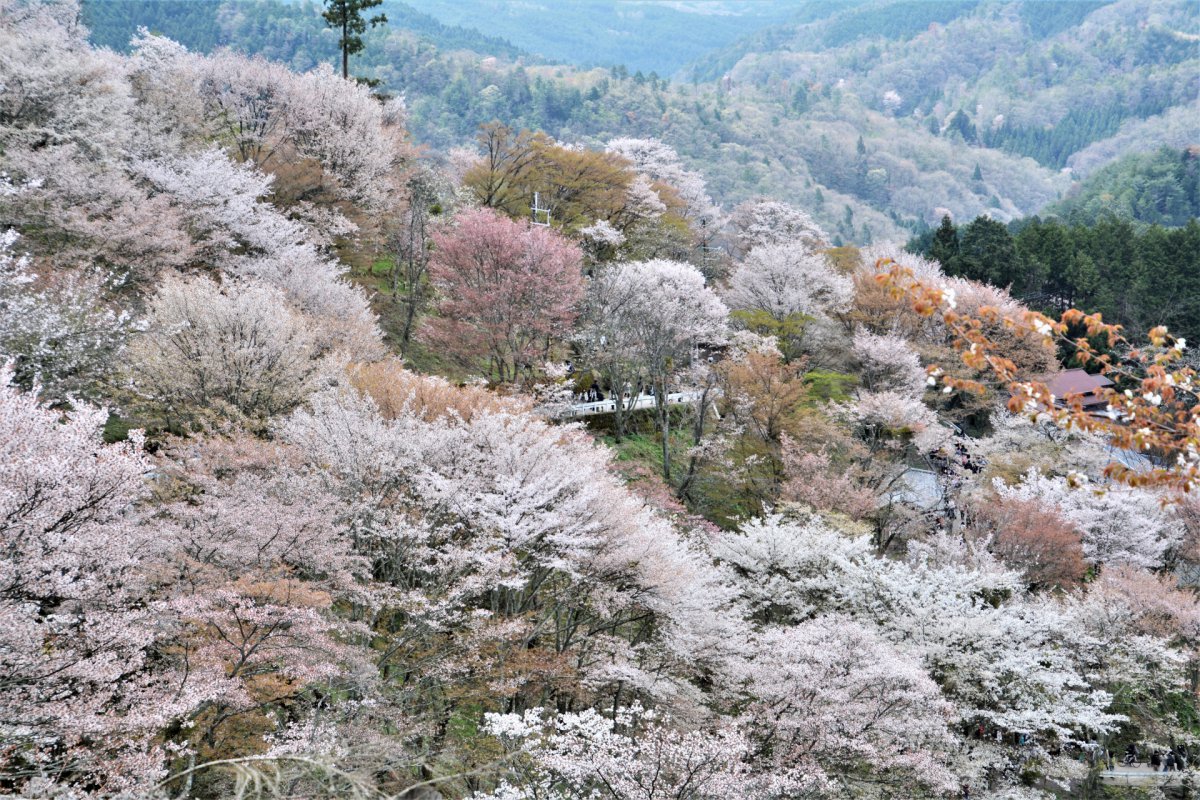
How to get to Kinpusenji Temple
10 minute walk from the upper station of the Yoshino Ropeway (Yoshinoyama Station).
7. Kumano Hongū Taisha, Wakayama
Kumano Hongu Taisha, located in the Wakayama Prefecture, serves as the head shrine of over 3,000 Kumano shrines across Japan. Due to floods in 1889, the shrine was moved from its original location at Oyunohara to its present site one kilometer away. The entrance to Oyunohara is marked by the largest Torii shrine gate in the world at 33.9 meters tall and 42 meters wide. This torii is called Otorii, O means “big”. It was erected in the year 2000 and is made of steel.
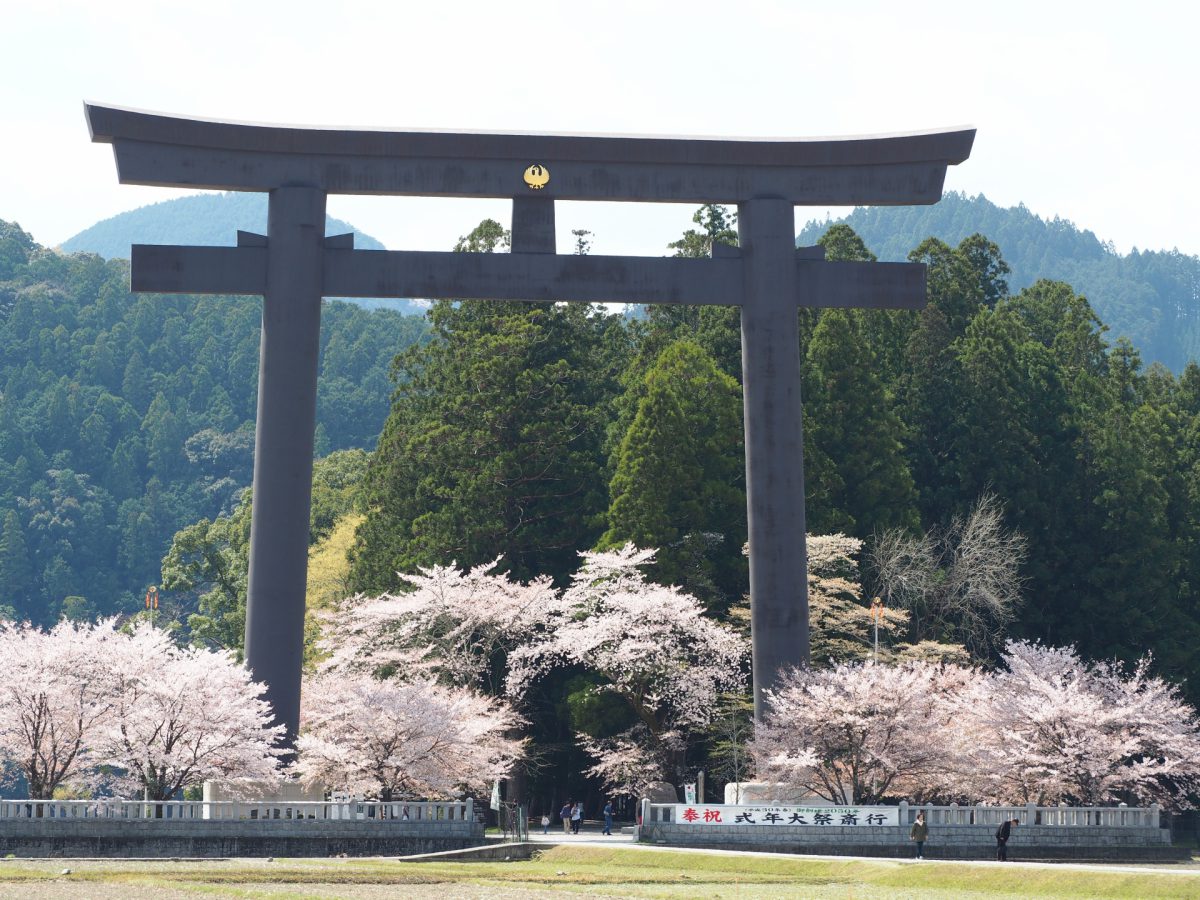
How to get to the Kumano Hongu Taisha
Buses run daily to Kumano Hongu Taisha from Kii-Tanabe Station (2 hrs), Shirahama Station (1h10m), Shingu Station (1h20 m), and Gojo Station (4 hrs).
8. Hakone Shrine, Kanagawa
This grand shrine was constructed in 757, during the Nara period, and stands at the foot of Mount Hakone along the shores of Lake Ashi. The approach to the shrine is lined with tall old cedar trees, and the shrine buildings are hidden in the dense forest.
One of the torii gates stands in Lake Ashinoko and the view of the torii gate with the lake is so special that there is often a long line of people wanting to take a photo of it. The Hakone Shrine is known for a place with spiritual energy and there are many visitors all year around.
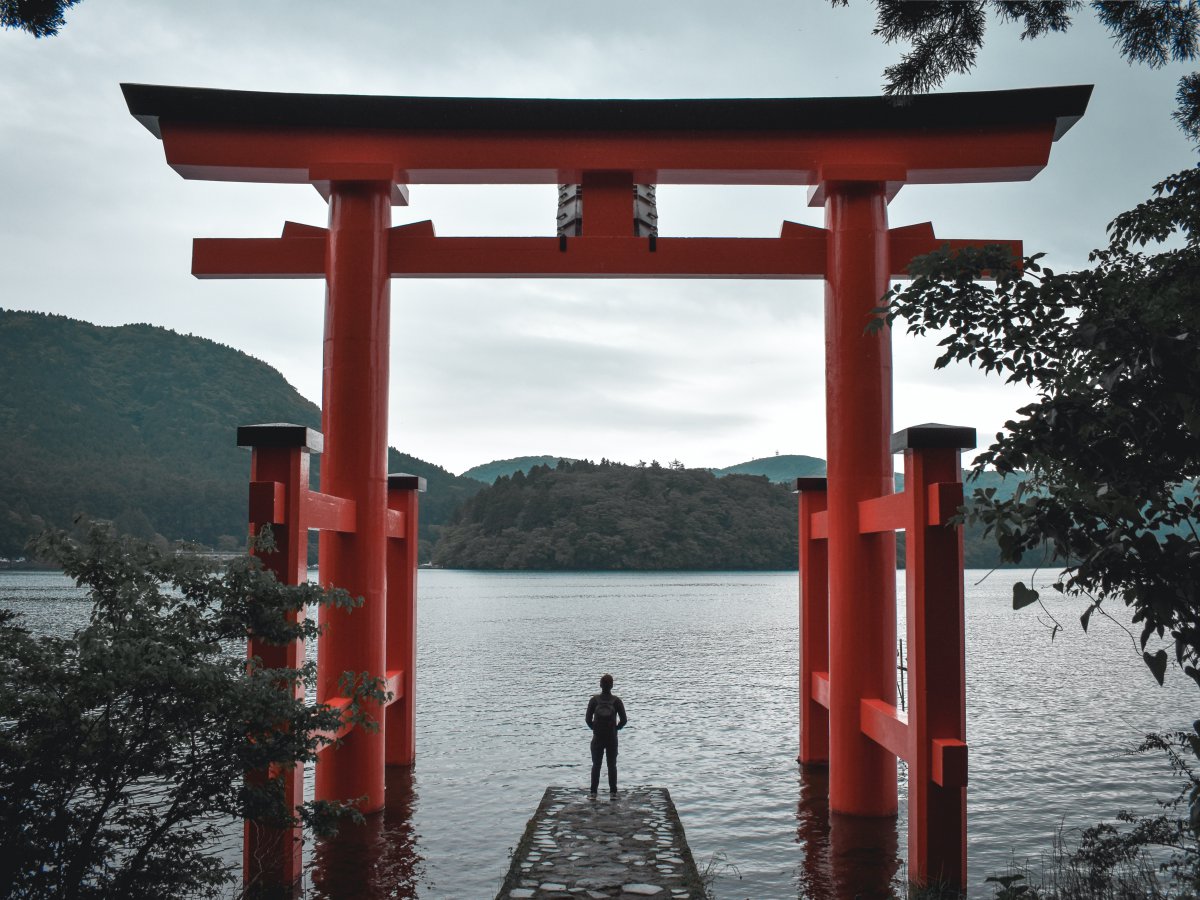
How to get to Hakone Shrine
5 minute walk from Motohakone boat pier, which is a 35 minute bus ride by Hakone Tozan Bus from Hakone-Yumoto Station.
9. Arakura Sengen Shrine, Yamanashi
Arakura Sengen Shrine is a beautiful shrine located near Kawaguchiko founded in 705. The shrine is surrounded by approximately 300 cherry trees, making it a beautiful place for cherry blossom viewing. The shrine itself is not the main reason why this torii is included on our list, but rather its location: Arakura Sengen Shrine is located in Arakurayama Sengen Koen, a scenic park on the mountainside of Mt. Arakura. The park is one of the most iconic photo spots of Japan, with a panoramic view of the city with Mt. Fuji in the background. For many photographers this place is a must go! Others just enjoy the great view with cherry blossoms in the park in spring.
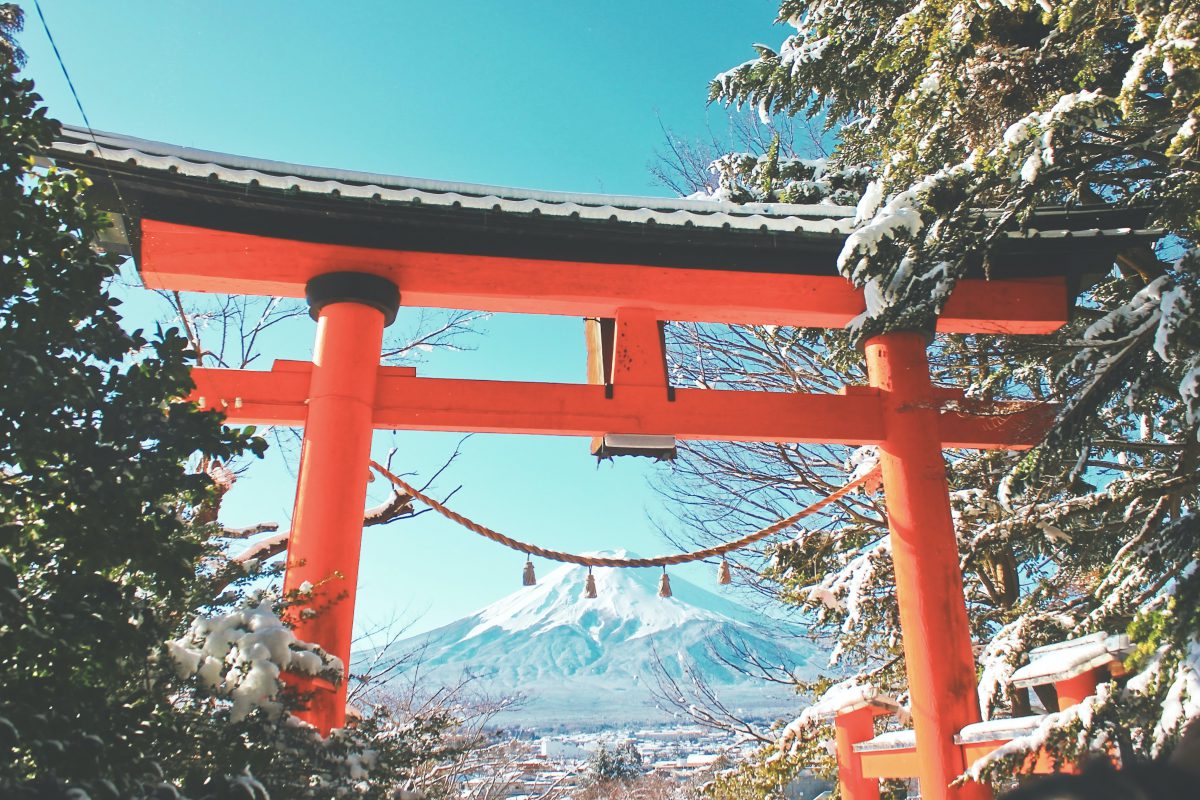
How to get to Arakura Sengen Shrine
Arakura Sengen Shrine is a 10 minute walk from Shimoyoshida Station.
10. Motonosumi Shrine, Yamaguchi
Motonosumi Shrine was built in 1955 in Yamaguchi Prefecture. The origin of the shrine is said that one night, a white fox appeared at the fisherman’s bedside and demanded to build a shrine. This relatively new shrine enshrines a deity of harvest, and you can find some fox statues and motifs since they are considered as messengers of the deity.
The unique feature of this shrine is 123 red torii gates lining up along the footpath toward the main shrine on the cliff. From the top, you can see a beautiful contrast of red torii gates against the blue ocean.
Try throwing money to the offering box which is installed on the big torii gate 5 meters above. It’s known as the most difficult offering box to put money in Japan! It’s believed that if you can put the money successfully into the offering box, your wish will be granted.
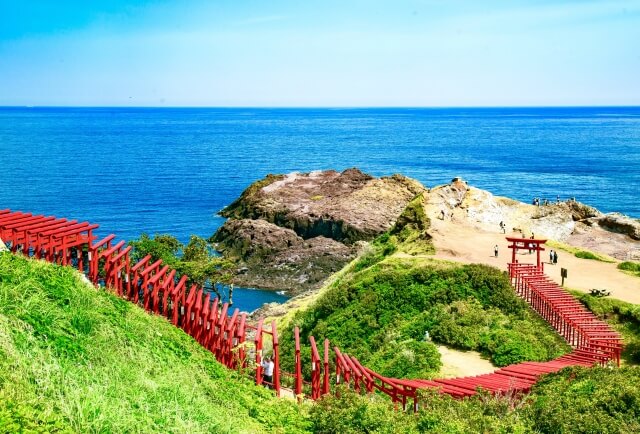
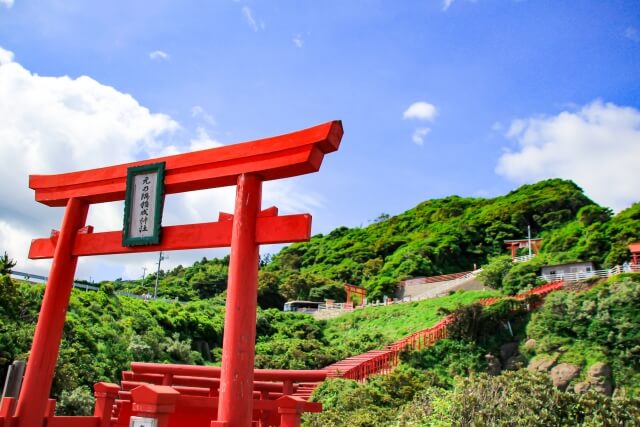
Torii gates are one of the most iconic Japanese structures that come in all sizes and colors and are made from different materials. They mark the transition from the mundane world to the sacred world and are often to be found at Shinto shrines. Though in some cases, you can also find a torii gate near a Buddhist temple. What did you think of our list of impressive torii gates? We hope you enjoy torii gates as much as the other features of the shrine or temple and take beautiful photos.
Explore Shrines with Kimono
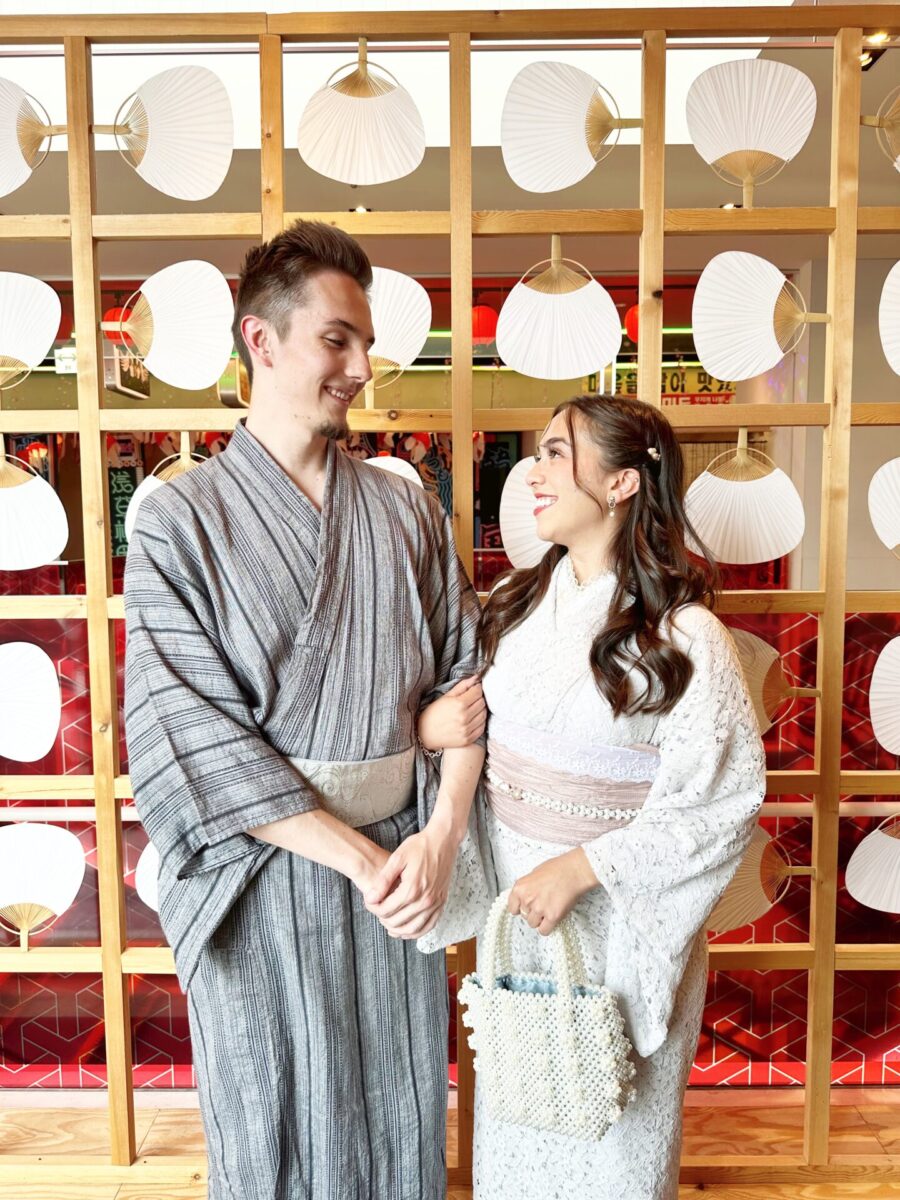
Kimono Rental is Available at Popular Tourist Attractions in Japan!
Discover Japan with a traditional Kimono from Kimono Rental Wargo! Explore cities or join festivals effortlessly starting from just ¥3,300. Our shops are conveniently located in Tokyo, Kyoto, Osaka, Kawagoe, and Kanazawa. Elevate your adventures with the elegance of the kimono and create unforgettable memories in Japan!
Japan Wonder Travel Tours
Japan Wonder Travel is a travel agency that offers guided tours throughout Japan.
From private walking tours to delicious Food and Drink tours, we can help you organize the best tours just for you! If you want to explore Japan and learn more about the history and backstories of each area you are visiting, our knowledgeable and friendly English speaking guides will happily take you to the best spots!
In addition, we can provide you with any assistance you may need for your upcoming trip to Japan, so please feel free to contact us if you have any questions or need some help!
▶Tokyo Tsukiji Fish Market Food and Drink Tour
Explore the most lively and popular fish market in Tokyo and try some of the local’s favorite street foods and sake with one of our friendly and knowledgeable English speaking guides!

▶Tokyo 1–Day Highlights Private Walking Tour (8 Hours)
There’s no better way to explore an area than taking a tour with a knowledgeable local guide. You will have the chance to learn about the history and interesting background stories of Tokyo, as well as discover some hidden gems which can be hard to do without a guide.

▶Mt. Fuji Day Trip Bus Tour from Tokyo
Experience the breathtaking views of Mt. Fuji by visiting the highlights of the area on our guided sightseeing bus tour! Departing from Shinjuku in central Tokyo, you can travel comfortably to all of the best spots in the area by bus.

▶Kyoto Private Full Day Walking Tour
On this full-day private tour of Kyoto, you will be able to see the highlights of Kyoto in just one day and at the same time develop a deeper understanding of both the culture of the area and Japan as a whole.
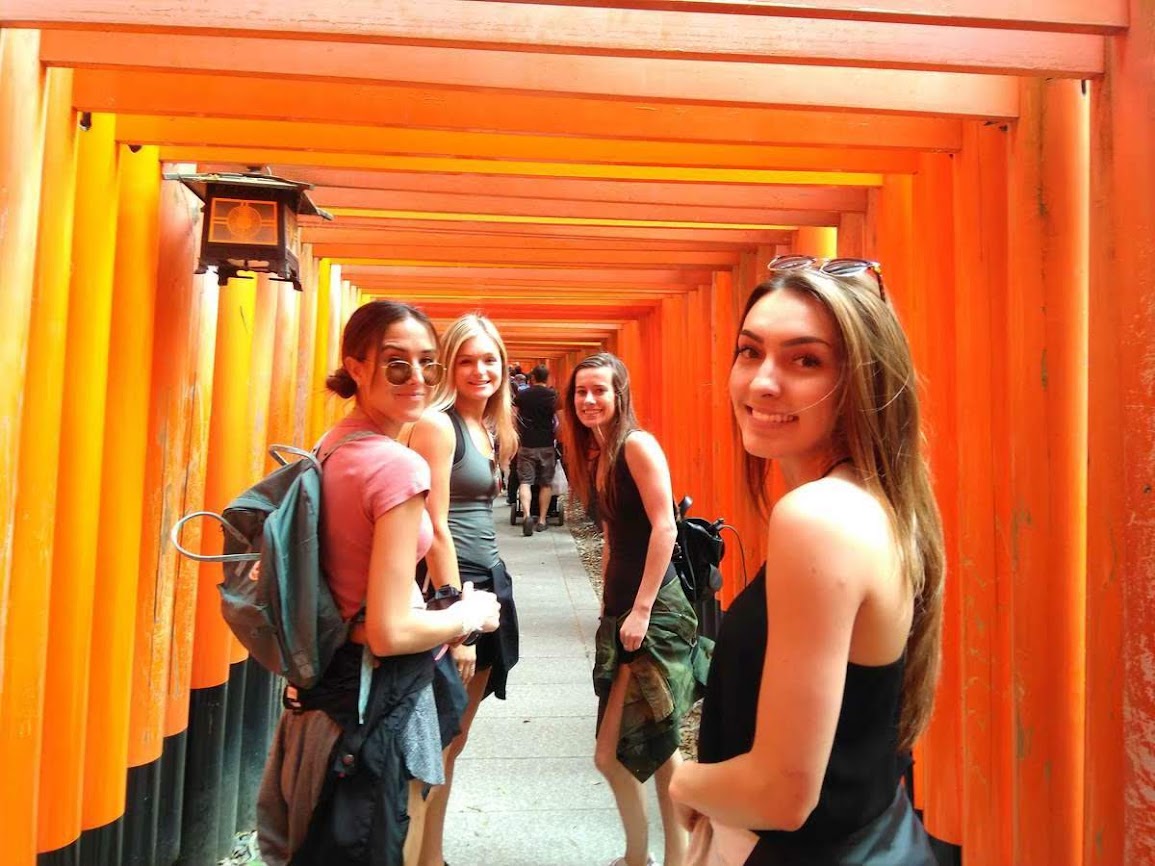
Follow us on Instagram or Facebook for more travel inspiration. Or tag us to get featured!
Happy traveling!
